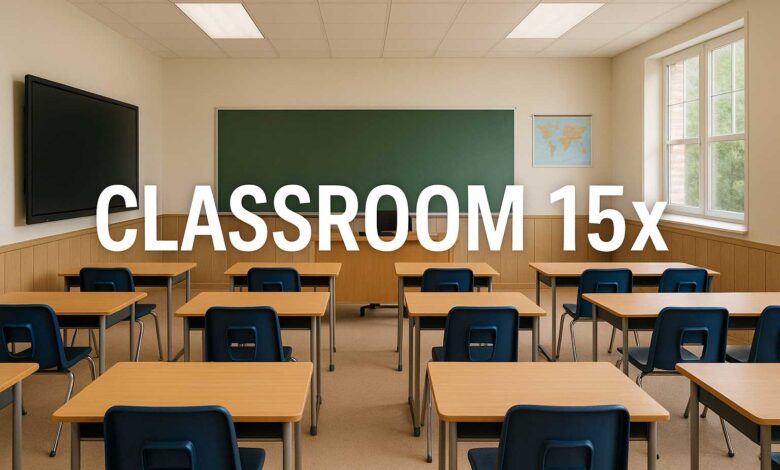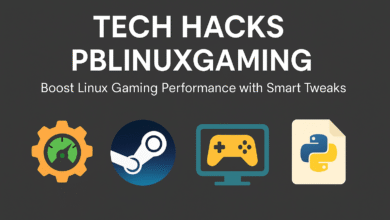Classroom 15x: Revolutionizing Modern Education with Power and Challenges
Unlocking the Future of Learning Through Innovation, Flexibility, and Student Engagement

Introduction
The educational landscape is undergoing a profound transformation, and Classroom 15x has emerged as a model of the future. It is more than just a learning space—it is a movement that combines innovation, technology, and student-centered strategies to reshape education. While the model promises positive advancements such as flexible learning spaces, personalized learning, and interactive technology, it also faces challenges like infrastructure costs and teacher readiness.
Classroom 15x aims to balance the benefits of blended learning, real-time feedback, and adaptive instruction with the realities of diverse student needs and institutional limitations. The framework shows how schools can make learning environments 15 times more dynamic and effective, but at the same time, it highlights the barriers that must be overcome for global adoption.
Quick Bio of Classroom 15x
| Attribute | Details |
|---|---|
| Concept | A modern educational framework combining technology, flexible learning spaces, and adaptive teaching |
| Focus | Personalized learning, hybrid classroom models, and interactive student engagement |
| Strengths | Smart classroom tools, edtech integration, immersive learning, project-based activities |
| Weaknesses | High implementation costs, digital divide, and teacher training challenges |
| Goal | To create an inclusive, student-centered learning ecosystem that prepares learners for the future |
What is Classroom 15x?
Classroom 15x is a visionary educational model that integrates advanced edtech tools, smart classroom setups, and student-centered learning techniques. It blends traditional teaching with digital pedagogy and ensures that learners receive a balanced mix of theory, practice, and technology-enabled insights.
Unlike conventional classrooms, Classroom 15x prioritizes modular classroom design, collaborative zones, and immersive learning experiences. Through augmented reality in classroom and virtual reality learning, it creates deeper engagement and encourages exploration beyond textbooks.
Key Features of Classroom 15x
Flexible Learning Space and Layout
One of the standout features of Classroom 15x is the flexible learning space. Desks, chairs, and boards are no longer static; instead, they can be rearranged to support project-based learning, collaborative zones, or quiet study areas.
Technology-Driven Instruction
The model embraces interactive technology, wearable tech in education, and IoT in classrooms to keep students connected. Teachers can rely on classroom dashboards and analytic dashboards for real-time feedback on student performance.
Personalized and Adaptive Learning
Student-Centered Learning
At the core of Classroom 15x lies personalized learning. Students can follow self-paced learning modules that match their abilities. By adopting adaptive instruction, educators can support both high achievers and struggling learners.
Mastery Learning and Microlearning Units
The system supports mastery learning, where students progress only after mastering a concept. To keep attention spans intact, lessons may be delivered in microlearning units, enabling faster comprehension and better retention.
Role of Technology in Classroom 15x
Smart Classrooms and Digital Pedagogy
Classroom 15x introduces smart classroom technology where digital boards, cloud-based classroom platforms, and AI-driven systems deliver engaged learning experiences. The shift toward digital pedagogy empowers teachers to move beyond lectures and engage students with interactive tools.
Immersive Learning with AR and VR
By using augmented reality in classroom and virtual reality learning, students experience immersive lessons. For example, they can explore historical sites in 3D or visualize scientific experiments without leaving the classroom.
Benefits of Classroom 15x
Positive Impacts
-
Enhanced Engagement – Students are more motivated through educational gamification and project-based activities.
-
Inclusive Education – With inclusive classroom design and differentiated instruction, every learner receives equal opportunity.
-
Future-Ready Skills – Collaboration, critical thinking, and digital literacy are developed naturally.
Negative Challenges
-
Infrastructure Costs – High investments in ergonomic classroom furniture, acoustics and lighting design, and connectivity can be limiting.
-
Teacher Preparedness – Without adequate training, teachers may find it hard to adapt to class design flexibility and advanced tools.
-
Equity Issues – Not every student has equal access to devices, which can widen the digital divide.
Implementation Strategies
Blended and Hybrid Classroom Approaches
Schools can begin by introducing blended learning and hybrid classroom models. This allows for smooth integration of traditional and digital methods, ensuring students and teachers adapt gradually.
Continuous Assessment and Feedback
The use of continuous assessment, formative assessment tools, and classroom dashboards ensures that teachers can track progress effectively. Real-time feedback helps in shaping personalized strategies for each learner.
Future of Classroom 15x
The future lies in seamless connectivity, edtech integration, and student well-being in classroom environments. Classroom 15x will not only change how lessons are delivered but also how education is perceived—as an interactive, inclusive, and lifelong process.
Institutions embracing flipped classroom methods, cognitive scaffolding, and cloud-based classroom platforms will be better prepared for the digital age. At the same time, they must ensure student well-being is prioritized to avoid over-reliance on screens.
Conclusion
Classroom 15x is both a promise and a challenge. It has the potential to redefine education through personalized learning, immersive technology, and flexible learning spaces, making classrooms smarter and more dynamic than ever before. However, challenges such as infrastructure costs, teacher training, and equity concerns cannot be overlooked.
If implemented wisely, Classroom 15x can serve as a positive revolution in education, where the benefits of interactive technology, project-based learning, and adaptive instruction outweigh the negatives. It is not just the classroom of tomorrow—it is the foundation of lifelong learning today.
Frequently Asked Questions (FAQ)
Q1: What makes Classroom 15x different from traditional classrooms?
Classroom 15x emphasizes flexible learning space, digital pedagogy, and student-centered learning, unlike static and lecture-based traditional classrooms.
Q2: How does Classroom 15x support personalized learning?
It uses adaptive instruction, mastery learning, and self-paced modules that match each student’s unique needs.
Q3: Can Classroom 15x be implemented in resource-limited schools?
Yes, but it requires step-by-step adoption, starting with low-cost solutions such as project-based learning and formative assessment tools before investing in full smart classroom systems.
Q4: What role does technology play in Classroom 15x?
Technology enables real-time feedback, immersive learning with AR/VR, and cloud-based platforms that make teaching more interactive.
Q5: What is the biggest challenge of Classroom 15x?
The biggest challenge is ensuring equity and access so all students benefit equally, regardless of their economic background.




